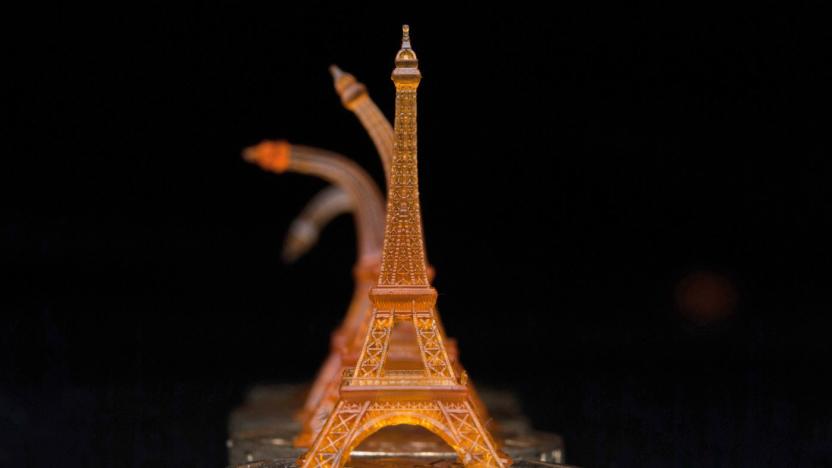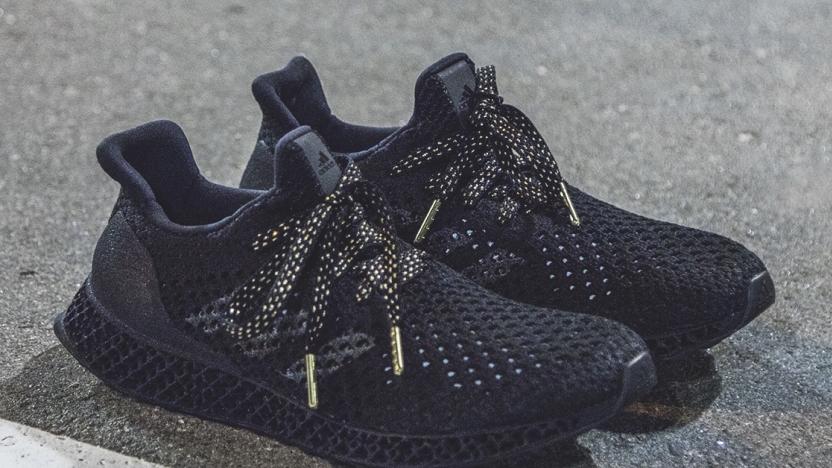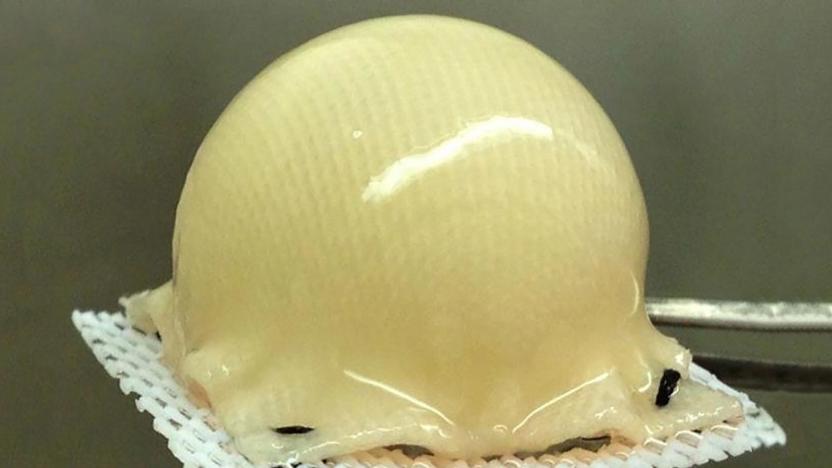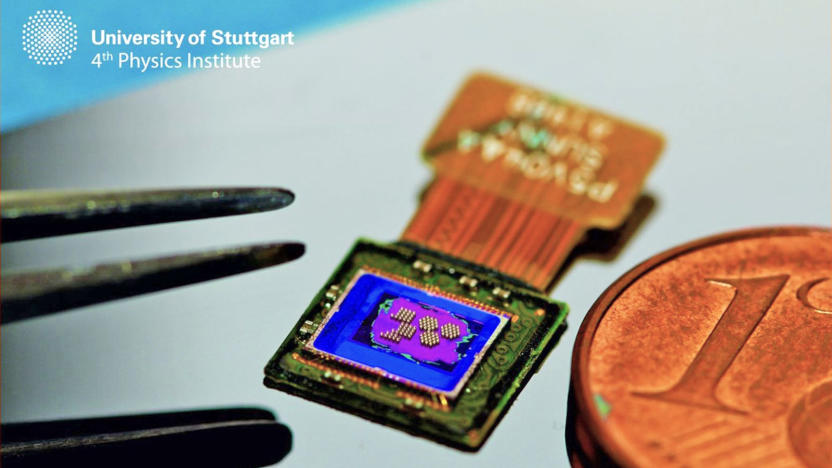3dprinting
Latest

ICYMI: Harnessing mother nature's fury for energy
try{document.getElementById("aol-cms-player-1").style.display="none";}catch(e){}Today on In Case You Missed It: A Japanese engineer created a wind turbine that can harness energy from both typhoons and hurricanes, watch the video of it here. Meanwhile, researchers at Northwestern University developed a 3D printed bone made of ceramic and polymer materials that can encourage bone to regrow itself once it's implanted. Scripps Institution for Oceanography had bad news for humanity this week after the group said the world's carbon levels went over 400 parts per million. There are three RIP items in the news this week, so get acquainted with the Rosetta Probe's storied history, Blackberry's decision to stop making its own handsets, and camera wearable company Narrative deciding to call it a day. As always, please share any interesting tech or science videos you find by using the #ICYMI hashtag on Twitter for @mskerryd.

How a 3D-printed boat race united a Red Hook community
Last Sunday, nearly 500 people gathered at Valentino Pier in Red Hook, Brooklyn, to cheer on close to 20 radio-controlled boats as they sped toward a target 150 feet away. The boat races were part of the second annual Red Hook Regatta, which was born last year as a means to highlight the area's history as a freight port, as well as the work of local youth. The competing vessels, which were either handmade or 3D-printed, were created to showcase the expertise of Red Hook's so-called Digital Stewards.

MakerBot's Replicator Mini+ is designed for classrooms
More and more classrooms today are getting into 3D printing, and MakerBot wants to be there for them. Today the company announced that it's taken its Replicator Mini printer, which was a surprising hit in schools, and made it faster and quieter than before. The new Replicator Mini+ is available for $999 starting today, and promises to be 10 percent faster and a whopping 58 percent quieter than before.

MakerBot's Replicator+ promises bigger, faster 3D prints
MakerBot has had its fair share of woes lately, but the company isn't slowing down. It's launching a slew of new products, including a printer, revamped software and new materials. The Replicator+ is available beginning today, for $1,999, which is cheaper than the company's fifth-generation devices. That is, until the introductory period is over come October 31st.

GE puts up $1.4 billion to acquire two 3D printing firms
GE has so far invested around $1.5 billion in 3D printing tech over the past six years, and its planned acquisition of Germany's SLM Solutions Group and Sweden's Arcam would only bolster its position in the business. At a combined cost of $1.4 billion, both companies offer an expansion of GE's additive manufacturing efforts, which is, as GE chairman Jeffrey R. Immelt explains, "part of GE's evolution into a digital industrial company."

Amtrak's next-gen high-speed trains, and more in the week that was
When it comes to high-speed rail, the US lags behind many other nations - but that's set to change, as the government just gave Amtrak a $2.45 billion loan to launch a new generation of high-speed trains within the next five years. Magnetic levitation technology is often associated with trains, but one engineer came up with a wild concept for a self-driving mag-lev vehicle that doubles as a living room. In other transportation news, a technology group 3D printed a cutting-edge bicycle from scratch, and a group of Gaza students built a sun-powered car to battle the region's fuel crisis.

3Doodler's new pro pen 3D prints in wood and metal
Once the hottest thing in gadgetry, 3D printers have become less buzzy as folks tire of ABS figurines. 3Doodler is trying to shake things up a bit with its 3Doodler Pro, a freehand pen that can print with materials containing real wood, copper and bronze. It doesn't melt copper, obviously, but 3Doodler adds particles of real metal and wood chips to a plastic ink base. The result is wood printouts that smell and sand like the real thing, or copper and bronze inks that glow when you shine them up.

MIT's new 3D-printer makes objects that remember their shape
3D printing has done a lot for medical science. It's helped us create better prosthetics, manufacture artificial vertebrae and even develop smaller internal cameras. Next, it could help us revolutionize medication delivery. MIT researchers are using a new 3D-printing process to create tiny structures that change shape at specific temperatures -- opening the door for a new drug delivery system that only medicates patients if they have a fever.

ICYMI: Temporary tat yourself for user interface
try{document.getElementById("aol-cms-player-1").style.display="none";}catch(e){}Today on In Case You Missed It: Microsoft and MIT built a computer interface that drops a touchpad into a shiny, golden temporary tattoo. Just as fantastic as you'd imagine, people can use them to input commands, get notifications and store data like NFC tags.

Adidas rewards its medal-winning Olympians with 3D-printed shoes
It's too early to tell whether 3D-printed footwear will ever be more than a gimmick. Still, you have to give credit to sportswear brands for trying something new, even if in some cases 3D printing is only used to make outsole prototypes. Last year, Adidas began showing the potential of the technology with concepts like Futurecraft 3D, a running shoe made partially out of 3D-printed materials. And now the company's taking that one step further: it created a ready-to-wear pair for its sponsored athletes at the 2016 Rio Olympics. As its name suggests, though, the "3D-printed Winners Shoe" will be limited to those who win a medal in Brazil.

Nike used 3D printing and Olympic sprinters to design its new track shoe
When Shelly-Ann Fraser-Pryce competes in the women's 100m and 4x100m relay at the Olympics this month, she'll do so wearing what Nike claims is one of its most advanced track and field shoes yet. The 29-year-old Jamaican, who is favored for gold in Rio, actually helped Nike design her new spikes, the Zoom Superfly Elite. In the years leading up to the 2016 summer games, she worked with Nike's Sport Research Lab to figure out the ideal performance for a sprinter silhouette. Among other experiments, she test-3D-printed prototypes of the spikes, which were tailor-made based on captured data that measured her speed on the track and, most importantly, off the blocks.

ICYMI: Some robots independently sing, others help babies
try{document.getElementById("aol-cms-player-1").style.display="none";}catch(e){}Today on In Case You Missed It: A new neural network robot in Japan can independently sing and move whenever it wants to. Researchers developed a robotic onesie for babies who may have cerebral palsy that helps make motor skills connections in the brain, giving them a boost in learning to crawl and walk. And Disney and ETH Zurich teamed up to engineer a new way to create 3D prints by thermoforming them one at a time. Finally make sure you watch the video of a gold-plated record playing all the way up to space and back down to earth, on a space-proof turntable. As always, please share any interesting tech or science videos you find by using the #ICYMI hashtag on Twitter for @mskerryd.

Nike's latest soccer cleat is its most data-driven shoe yet
In soccer, like most other sports, footwear plays a major role in helping athletes perform at their best. Your shoes say a lot about who you are as a player, and you need them almost as much as you need the ball to play. This week, soccer pros all over the world will test-drive Nike's latest flagship football boot, known as the Magista 2. Unlike the original, released in 2014, Nike says its new model is fully driven by two years of research. Over that span, the sportswear giant relied on collecting athlete data and 3D-printed prototypes to build the design that hits stores tomorrow.

3D-printed 'Pokémon Go' cover aims for you, obscures screen
Catching monsters in Pokémon Go sounds deceptively simple: find a creature, and throw an imaginary ball at it by swiping up on your phone screen. The reality is a lot more frustrating -- if you don't flick your finger in a perfectly straight line, the throw will curve to the side and miss. There are two solutions to this. You could practice, or, you could 3D-print a ridiculous phone-cover that takes away all of the challenge. Jon Clever chose to do the latter.

Stem cell-based cartilage could fix your broken hip
Doctors want to 3D print transplantable organs from your own stem cells, but now they might be able to replace a bum hip, too. A team of scientists in St. Louis and Durham used stem cells to grow cartilage on a 3D "scaffold" that can be molded into the exact shape of a patient's hip joint. It could then be implanted onto the surface of the bone, replacing the regular cartilage that acts as a "lubricant" for the ball and socket-style joint. Since it would be made from your own stem cells, there's no chance of rejection.

MakerBot didn't mislead customers about broken replicators
A Minnesota court has dismissed a class-action lawsuit brought against Makerbot that said the company had knowingly-produced dodgy 3D printers. The firm was accused of fraudulently misleading both investors and customers after talking-up the fifth-generation hardware. As we now know, devices were shipped with broken extruders that easily clogged, but Makerbot refused to acknowledge a problem or engage with complaints. Judges didn't shower the company with praise, but said that while there was some evidence that executives were behaving badly, evidence wasn't strong enough to suggest serious wrongdoing.

Cancer patient receives a 3D-printed jaw
If you lose your lower jaw to cancer, you don't have many options for prosthetics. At that size, traditional clay is so heavy and unwieldy that you can only wear it for a few hours at a time. Indiana University's Dr. Travis Bellicchi and team have developed a much better alternative, though. He recently gave tongue cancer patient Shirley Anderson a 3D-printed jaw after losing his natural jaw to the side effects of radiation treatments. The digitally-modeled piece is not only much lighter, but far more natural-looking -- the creators could create more natural borders and account for fine details like skin pores. The result is good enough that Anderson could comfortably wear the prosthesis in public without drawing significant attention.

Microscopic camera could be injected into your body
You may have seen some very small cameras in your day, but nothing like this. University of Stuttgart scientist have developed a 3D-printed, three-lens camera that's just 100 micrometers (0.004 inches) across. That's small enough that you could inject into your body with a syringe -- perfect for endoscopy and other times you'd want to observe a patient's body from the inside. It currently needs to be tethered to an optical fiber, but it can focus on objects as close as 0.12 inches. You can even print unconventional lens shapes (such as rings or triangles) to fit specific shapes and goals.

Gene editing can end disease and fight global famine
We're looking at the single greatest advancement in genetics since Mendelev started growing peas. CRISPR-Cas9 gene-modification technology is powerful enough to cure humanity's worst diseases, yet simple enough to be used by amateur biologists. You thought 3-D printers and the maker movement were going to change the world? Get ready for a new kind of tinkerer -- one that wields gene-snipping scissors.

Science fund lets kids learn 3D printing, gene modification
President Obama declared June 17 to the 23rd to be the National Week of Making, and what better way to celebrate than funding research for kids? The National Science Foundation (NSF) created a $1.5 million "early-concept grant" for five youth-oriented projects. They include 3D printing for inner-city kids and a DNA project that teaches high schoolers to build their own organisms (yep). "A core tenet of the maker movement is that experiences involving active exploration of ideas ... elicit enjoyment and foster lasting learning," says Rutgers' Elizabeth Bonawitz.









